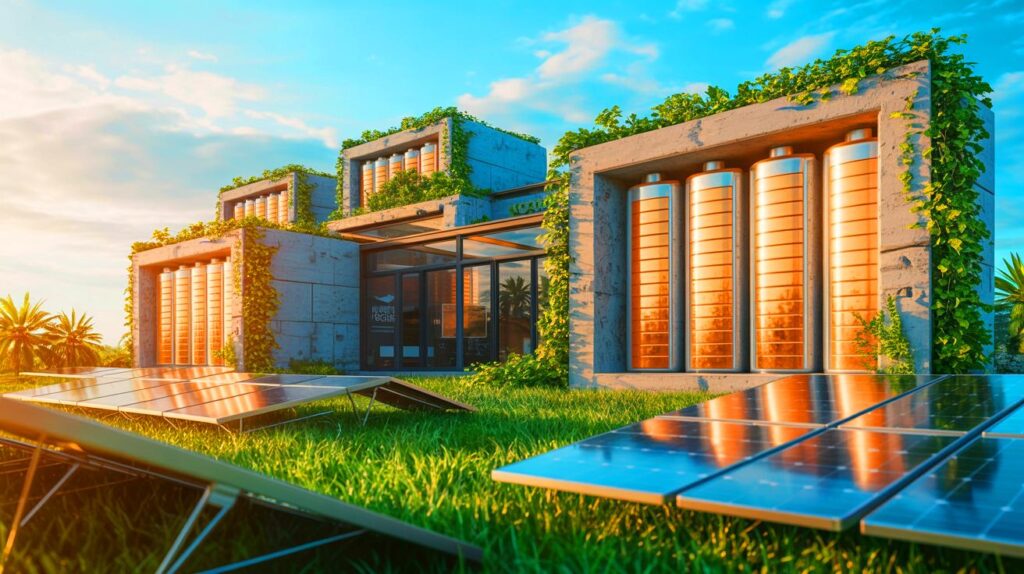| In Short |
|
Technological advancements are rapidly reshaping our daily lives. Recently, a team of researchers from France and Spain developed a cement-like material capable of storing energy while supporting structural loads. This innovative material could revolutionize how we design and use buildings by transforming them into true rechargeable batteries. Led by Dr. Vadim M. Kovrugin, this study promises numerous applications in sustainable architecture and energy management.
A Material with Remarkable Properties
The developed material combines metakaolin, a synthetic aluminous silicate derived from kaolinite clay, with a specific activating solution. This combination forms a robust geopolymer, which, when integrated with zinc and manganese dioxide electrodes, becomes a high-performance solid battery. With an energy storage capacity of about 3.3 watt-hours per liter, this system represents a significant advancement in integrating energy systems into construction materials.
What distinguishes this innovation from traditional batteries is its ability to be directly integrated into infrastructures, actively contributing to the energy ecosystem. Unlike traditional Portland cement, which is typically used for heat storage and generates high carbon emissions, the geopolymer approach proves to be more sustainable. It allows for electrochemical energy storage, which is significantly more efficient than thermal storage.
Challenges and Solutions
While promising, this new material faces certain challenges, including hydrogen evolution, which may compromise the long-term performance of the battery by damaging the electrode-electrolyte interface. To address this, researchers have proposed a modular design that facilitates easier maintenance and replacement of battery components without compromising the structural integrity of the material.
The water loss observed after 40 days of curing has also highlighted the importance of hydration management and drying behavior. Excessive dehydration can lead to a decrease in electrochemical stability, suggesting that hydration levels are crucial for maintaining sufficient conductivity. However, increasing the water content could compromise the mechanical strength of the material, necessitating further optimization of the geopolymer’s composition and curing process.
Toward Energy Architecture
Integrating energy storage capabilities into construction materials could transform modern architecture. This innovation paves the way for buildings that not only consume energy but also actively produce and store it. The concept of energy-autonomous buildings could significantly reduce our dependence on external energy sources and decrease the carbon footprint of infrastructure.
Moreover, this technology could be particularly beneficial in remote areas or densely populated urban zones where space for renewable energy sources is limited. By incorporating storage capabilities within the very walls of buildings, we could maximize energy efficiency while minimizing spatial occupation.
Future Perspectives
Despite the technical challenges, the potential offered by this material is immense. It could serve as a foundation for a new generation of sustainable infrastructures, capable of meeting growing energy demands while reducing environmental impact. Researchers continue to work on optimizing this material for large-scale viability, which could fundamentally transform how we conceive of buildings and infrastructures.
As research progresses, it is crucial to consider how this technology can be implemented in the real world. What will be the economic and environmental impacts on a large scale, and how can policymakers and architects adapt their practices to integrate this innovation?







